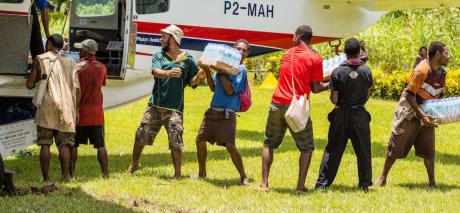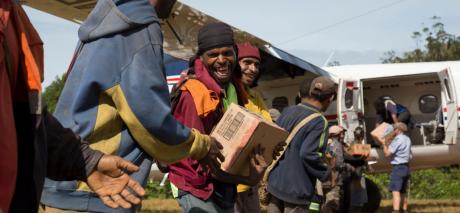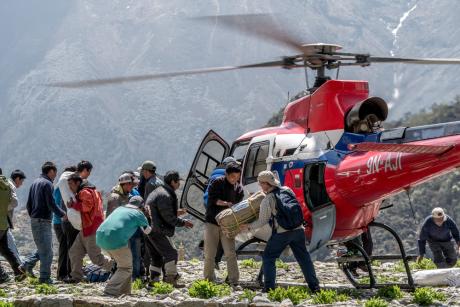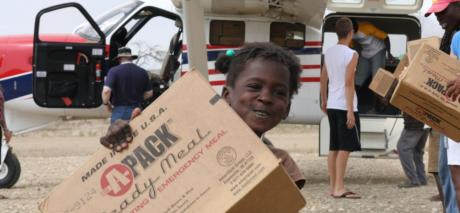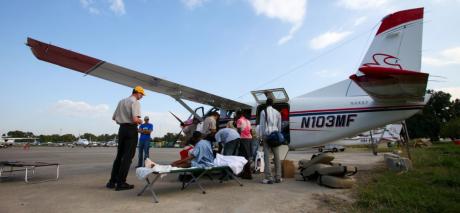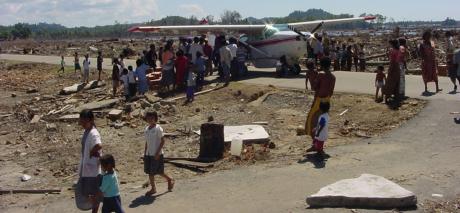
On 26 February 2018, an earthquake measuring 7.5 on the Richter scale struck Papua New Guinea, triggering landslides, destroying homes, contaminating water sources and affecting crops and food supplies. With MAF already in country, our national team, our MAF Technologies team and our Disaster Response team got to work immediately. We flew survey flights to assess the damage and passed this information on to the government, Australian military and other NGOs responding. This information proved to be vital, with the PNG Defence Force Lead saying “MAF will pretty much determine which direction resources go, for they currently have the most information.”
In the days, weeks and months that followed, MAF continued to serve the people that had been impacted. We performed medical evacuations, delivered food, water and shelter supplies to stricken communities, and repatriated people back home once treated. By the end of the response, MAF had carried out 248 flights, transporting over 200,000kg of cargo and over 400 people on disaster response flights. We continue to serve the affected communities.
